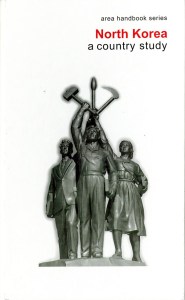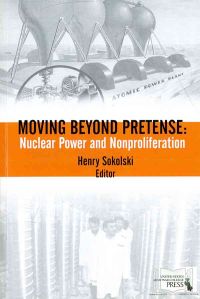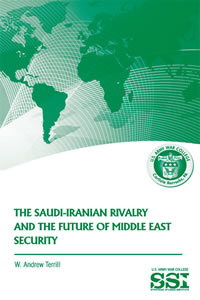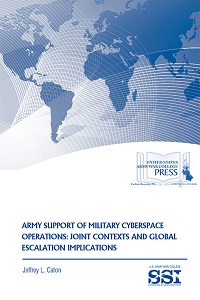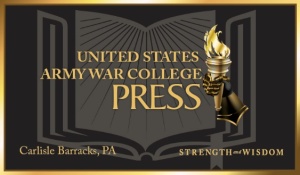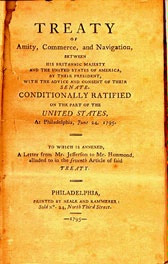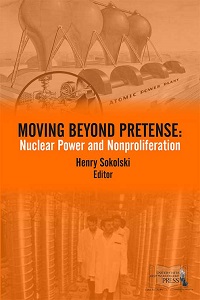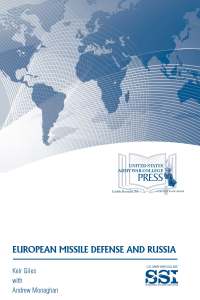If you’re like me, hearing the speculation about the disappearance of Malaysia Flight 370 has created a number of questions in your mind about air safety in America and why the United States is taking an active role in this mystery.
 In this two-part blog post “Keeping Our Skies Safe”, we review the many processes and policies in place to regulate United States airspace and to protect air travelers, flight personnel and all sorts of aircraft flying U.S. skies. In “Keeping Our Skies Safe, Part 1 of 2: Aviation safety planning & response,” we will cover the many aviation safety publications produced by the United States Federal Government, future plans to keep ahead of evolving flight safety issues, and U.S. emergency response.
In this two-part blog post “Keeping Our Skies Safe”, we review the many processes and policies in place to regulate United States airspace and to protect air travelers, flight personnel and all sorts of aircraft flying U.S. skies. In “Keeping Our Skies Safe, Part 1 of 2: Aviation safety planning & response,” we will cover the many aviation safety publications produced by the United States Federal Government, future plans to keep ahead of evolving flight safety issues, and U.S. emergency response.
“Keeping Our Skies Safe, Part 2 of 2: Aviation safety rules and regulations” will cover the many laws and regulations the United States has put in place to enforce these aviation best practices on everything from gliders and balloons to commercial jet airplanes.
Part 1 of 2: Aviation Safety Planning & Response
International and national aviation safety practices and adherence to them is one of the first places investigators look when reviewing an accident or disappearance of a plane such as is presumed to have happened with Flight 370. In the United States, the Federal Aviation Administration or FAA within the Department of Transportation is the Federal agency charged with the “continuing mission… to provide the safest, most efficient aerospace system in the world.” The FAA produces a number of vital publications for the entire aviation industry with guidelines, research, analysis and best practices.
SAFETY BRIEFINGS
 The FAA Safety Briefing magazine provides updates on major US Federal Aviation Administration rule changes and proposed changes, as well as refresher information on flight rules, maintenance airworthiness, avionics, accident analysis, and other topics. A must-have for pilots, air traffic controllers, airplane maintenance personnel and anyone involved in ensuring flying safely.
The FAA Safety Briefing magazine provides updates on major US Federal Aviation Administration rule changes and proposed changes, as well as refresher information on flight rules, maintenance airworthiness, avionics, accident analysis, and other topics. A must-have for pilots, air traffic controllers, airplane maintenance personnel and anyone involved in ensuring flying safely.
(6 issues per year. Subscription price covers issues for 1 year)
FAA Safety Briefing magazine is available on a subscription basis from the US Government Bookstore and can be found here to order print copies: http://bookstore.gpo.gov/products/sku/750-002-00000-5?ctid=1736
FAA Safety Briefings individual issues can be found online here at US Federal Aviation Administration: http://www.faa.gov/
The Future of U.S. Air Travel?
What is the Federal Aviation Administration planning in order to deliver a better travel experience in the future with fewer delays and enhanced safety? How is the U.S. Federal Aviation Administration incorporating the passengers’ point of view when thinking about the future plans for the aviation experience? The answers are delivered in the Next Generation (aka “NextGen”) Plan for the FAA.
 The 2013 edition of the NextGen Plan serves as a roadmap of the Federal Aviation Administration’s (FAA’s) ongoing transition to NextGen and provides an overview of the benefits aircraft operators and passengers are receiving from recent NextGen improvements. NextGen is the shift to smarter, satellite-based and digital technologies and new procedures to make air travel more convenient, predictable and environmentally friendly.
The 2013 edition of the NextGen Plan serves as a roadmap of the Federal Aviation Administration’s (FAA’s) ongoing transition to NextGen and provides an overview of the benefits aircraft operators and passengers are receiving from recent NextGen improvements. NextGen is the shift to smarter, satellite-based and digital technologies and new procedures to make air travel more convenient, predictable and environmentally friendly.
Highlights of the Plan include the latest on metroplex initiatives, Performance Based Navigation growth, Automatic Dependent Surveillance-Broadcast deployments, surface collaboration and plans for future benefits. The plan devotes an entire chapter to general aviation and recognizes the growing role of this important stakeholder. The outreach document provides FAA stakeholders — including the aviation community, Congress, government oversight entities and the general public — with the latest progress in the transformation of the National Airspace System.
NextGen offers a better travel experience, with fewer delays, more predictable trips and enhanced safety.People who live near airports may experience less aircraft noise and fewer emissions. NextGen will increase the predictability and reliability of airport operations, enhancing the role of airports as economic engines for the communities they serve. NextGen is vital to preserving aviation’s significant contributions to our national economy.
You can download the FREE ePub NextGen Implementation Plan available here: http://bookstore.gpo.gov/products/sku/050-300-00005-6 or from the FAA agency website.
The U.S. Navy’s Role in Aviation Safety
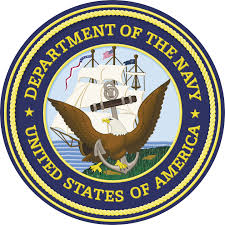 (Google Images –Photo image compliments of en.wikipedia.org)
(Google Images –Photo image compliments of en.wikipedia.org)
The US Navy is very involved with the mysterious disappearance of Malaysia Flight 370. What do our Navy personnel responsible for protecting American by use of the oceans know about recovery of “black boxes”?
 One reason why the US Navy may be involved with the tracking of the submersion of the Malaysia Flight 370” black box” may be attributed to their significant expertise in this area. In fact, the US Navy has been involved in deep sea recovery for decades. As you read the story of An Underwater Ice Station Zebra: Recovering a KH-9 Hexagon Capsule From 16,400 Feet Below the Pacific Ocean: Selected Declassified CIA Documents, you will learn that the U.S. Navy ‘s advanced method at deep submersible recovery began in 1972 with the Trieste II (DSV-1). Publicly called a “data package,” the object was actually part of a U.S. spy satellite, codenamed HEXAGON. Before today’s digital technology, photo reconnaissance satellites used film, which returned to Earth in capsules ejected from the satellite. The capsules, called “buckets,” reentered Earth’s atmosphere and deployed a parachute to slow their descent.
One reason why the US Navy may be involved with the tracking of the submersion of the Malaysia Flight 370” black box” may be attributed to their significant expertise in this area. In fact, the US Navy has been involved in deep sea recovery for decades. As you read the story of An Underwater Ice Station Zebra: Recovering a KH-9 Hexagon Capsule From 16,400 Feet Below the Pacific Ocean: Selected Declassified CIA Documents, you will learn that the U.S. Navy ‘s advanced method at deep submersible recovery began in 1972 with the Trieste II (DSV-1). Publicly called a “data package,” the object was actually part of a U.S. spy satellite, codenamed HEXAGON. Before today’s digital technology, photo reconnaissance satellites used film, which returned to Earth in capsules ejected from the satellite. The capsules, called “buckets,” reentered Earth’s atmosphere and deployed a parachute to slow their descent.
During the first HEXAGON mission in 1971, the parachute broke off causing the bucket to crash into the ocean. This release includes photos of the capsule on the ocean floor, pictures of the Trieste II (DSV-1), and an article recounting the deepest undersea salvage then attempted.
If you would like to read about the US Navy’s fascinating recovery of the HEXAGON, you can purchase this title at the US Government Bookstore at this link: http://bookstore.gpo.gov/products/sku/041-015-00294-5
U.S. Emergency Response
When disaster strikes including transportation accidents, the US Federal Government often provides expertise to emergency responders. The U.S. has expanded its emergency response knowledge base and capacity since the World Trade Center and Pentagon attacks on 9/11 and now has many bestselling titles available relating to Disaster / Emergency Response.
 The official Emergency Response Guidebook (ERG) is a guide for use by transporters, firefighters, police, and other emergency services personnel who may be the first to arrive at the scene of a transportation incident involving a hazardous material, such as an oil or chemical spill. It is used by first responders in:
The official Emergency Response Guidebook (ERG) is a guide for use by transporters, firefighters, police, and other emergency services personnel who may be the first to arrive at the scene of a transportation incident involving a hazardous material, such as an oil or chemical spill. It is used by first responders in:
(1) quickly identifying the specific or generic classification of the material(s) involved in the incident, and
(2) protecting themselves and the general public during this initial response phase of the incident.
The ERG is updated every three to four years to accommodate new products and technology.
This title is available for purchase at the US Government Bookstore at this link: http://bookstore.gpo.gov/products/sku/050-000-00596-8
U.S. Coast Guard Incident Management Handbook assists Coast Guard personnel in response to oil spills, search and rescue operations and other emergency situations on the water.
 The Coast Guard Incident Management Handbook (IMH) is designed to assist Coast Guard personnel in the use of the National Incident Management System (NIMS) Incident Command System (ICS) during multi-contingency response operations and planned events. The Incident Management Handbook is an easy reference job aid for responders. Also useful for other waterway rescue and police operations.Read the table of contents and purchase this title at this link on the US Government Bookstore: http://bookstore.gpo.gov/products/sku/050-012-00465-0
The Coast Guard Incident Management Handbook (IMH) is designed to assist Coast Guard personnel in the use of the National Incident Management System (NIMS) Incident Command System (ICS) during multi-contingency response operations and planned events. The Incident Management Handbook is an easy reference job aid for responders. Also useful for other waterway rescue and police operations.Read the table of contents and purchase this title at this link on the US Government Bookstore: http://bookstore.gpo.gov/products/sku/050-012-00465-0
This title is also available in a Spanish-language version,Manual Para el Manejo de Incidentes / Servicios de Guardacostas and can be purchased here: http://bookstore.gpo.gov/products/sku/050-012-00473-1
 And finally, Department of Defense Support to Foreign Disaster Relief (Handbook for JTF Commanders and Below) is a manual for personnel involved in a foreign disaster relief mission, including a search for a missing airplane.
And finally, Department of Defense Support to Foreign Disaster Relief (Handbook for JTF Commanders and Below) is a manual for personnel involved in a foreign disaster relief mission, including a search for a missing airplane.
A classified version exists only for certain military personnel, but the U.S. Department of Defense (DoD) also released this unclassified version that can be used not only by members of the military, but also by anyone involved in U.S. foreign disaster response JTF (Joint Task Force) operations, including U.S. Government agencies, international organizations, Intergovernmental Organizations (IGO) and Non-Governmental Organizations (NGO).
This handbook covers the: legal authority and principles; operational context and planning factors; both supporting groups and supported foreign disaster relief organizations; and DOD guidelines for interaction with the U.S. Department of State and US Agency for International Development (US-AID) and NGOs and International Organizations such as the United Nations and International Red Cross and Red Crescent.
Read more about this information-packed handbook in our previous blog post: The U.S. military storms to the rescue in foreign disaster relief.”
How Can I get these aviation safety publications ?
- Shop Online Anytime: You can buy these eBooks and print publications (with FREE Standard Shipping worldwide) from the U.S. Government Online Bookstore website at http://bookstore.gpo.gov:
- Order by Phone: You may also order print editions by calling our Customer Contact Center Monday through Friday, 8 am to 5:30 pm Eastern (except US Federal holidays). From US and Canada, call toll-free 1.866.512.1800. DC or International customers call +1.202.512.1800.
- Shop our Retail Store: Buy a copy of any print editions from this collection at GPO’s retail bookstore at 710 North Capitol Street NW, Washington, DC 20401, open Monday–Friday, 9 a.m. to 4 p.m., except Federal holidays, Call (202) 512-0132 for information or to arrange in-store pick-up.
- Visit a Federal Depository Library: Search for U.S. Government publications in a nearby Federal depository library. You can find the records for most titles in the Catalog of U.S. Government Publications or CGP.
About the Author – This week’s blog contributor is Maureen Whelan, Senior Marketing Team Leader for GPO’s Publication & Information Sales division program office in Washington, DC. Maureen oversees print and digital content dissemination strategy and manages third party free and paid content distribution platforms and vendors such as Apple iBookstore, Google Play eBookstore, EBSCOhost, Overdrive, and more. Additionally, Maureen’s commercial publishing industry experience with publishing requirements, copyrights, product formats and content metadata and search optimization have helped Federal agencies publications be more discoverable through these consumer channels. A few examples of commercially popular Federal print books that were successfully migrated to digital include The Healthy Woman and The Basic Guide to Exporting.
 Read through select books in our International Affairs and International Organization collections to learn about some of NATO’s initiatives that have impacted U.S foreign policy throughout the last seventy years. A few featured publications from these collections include:
Read through select books in our International Affairs and International Organization collections to learn about some of NATO’s initiatives that have impacted U.S foreign policy throughout the last seventy years. A few featured publications from these collections include: NATO Cyberspace Capability: A Strategic and Operational Evolution. This publication discusses the development of cyberspace defense capabilities for the North Atlantic Treaty Organization (NATO) and how it has been making steady progress since its formal introduction at the North Atlantic Council Prague Summit in 2002. Bolstered by numerous cyber attacks such as those in Estonia in 2007, Alliance priorities were formalized in subsequent NATO cyber defense policies that were adopted in 2008, 2011, and 2014. This monograph examines the past and current state of NATO’s cyberspace defense efforts by assessing the appropriateness and sufficiency of them to address anticipated threats to member countries, including the United States.
NATO Cyberspace Capability: A Strategic and Operational Evolution. This publication discusses the development of cyberspace defense capabilities for the North Atlantic Treaty Organization (NATO) and how it has been making steady progress since its formal introduction at the North Atlantic Council Prague Summit in 2002. Bolstered by numerous cyber attacks such as those in Estonia in 2007, Alliance priorities were formalized in subsequent NATO cyber defense policies that were adopted in 2008, 2011, and 2014. This monograph examines the past and current state of NATO’s cyberspace defense efforts by assessing the appropriateness and sufficiency of them to address anticipated threats to member countries, including the United States.




 Posted by Trudy Hawkins
Posted by Trudy Hawkins 


